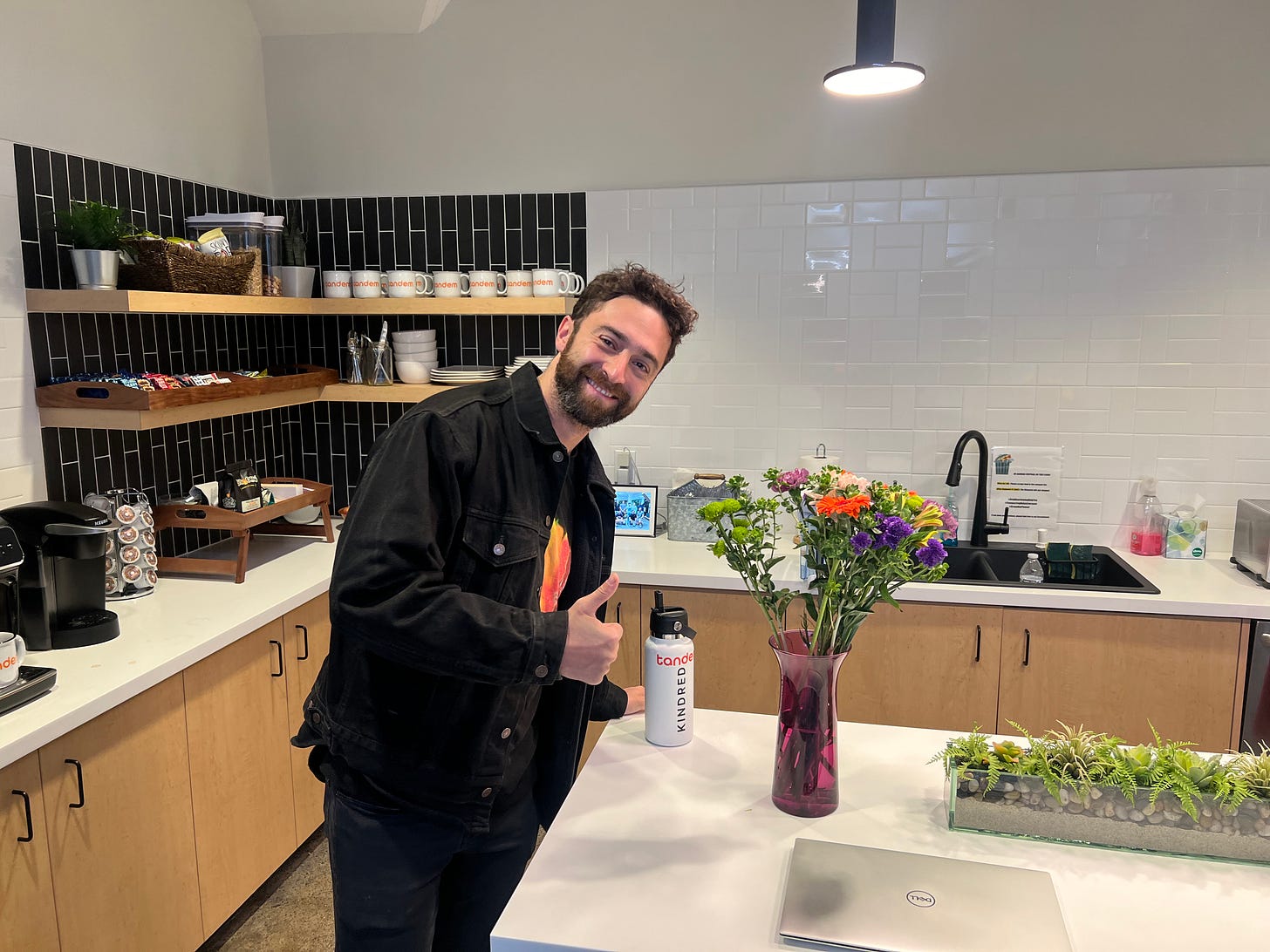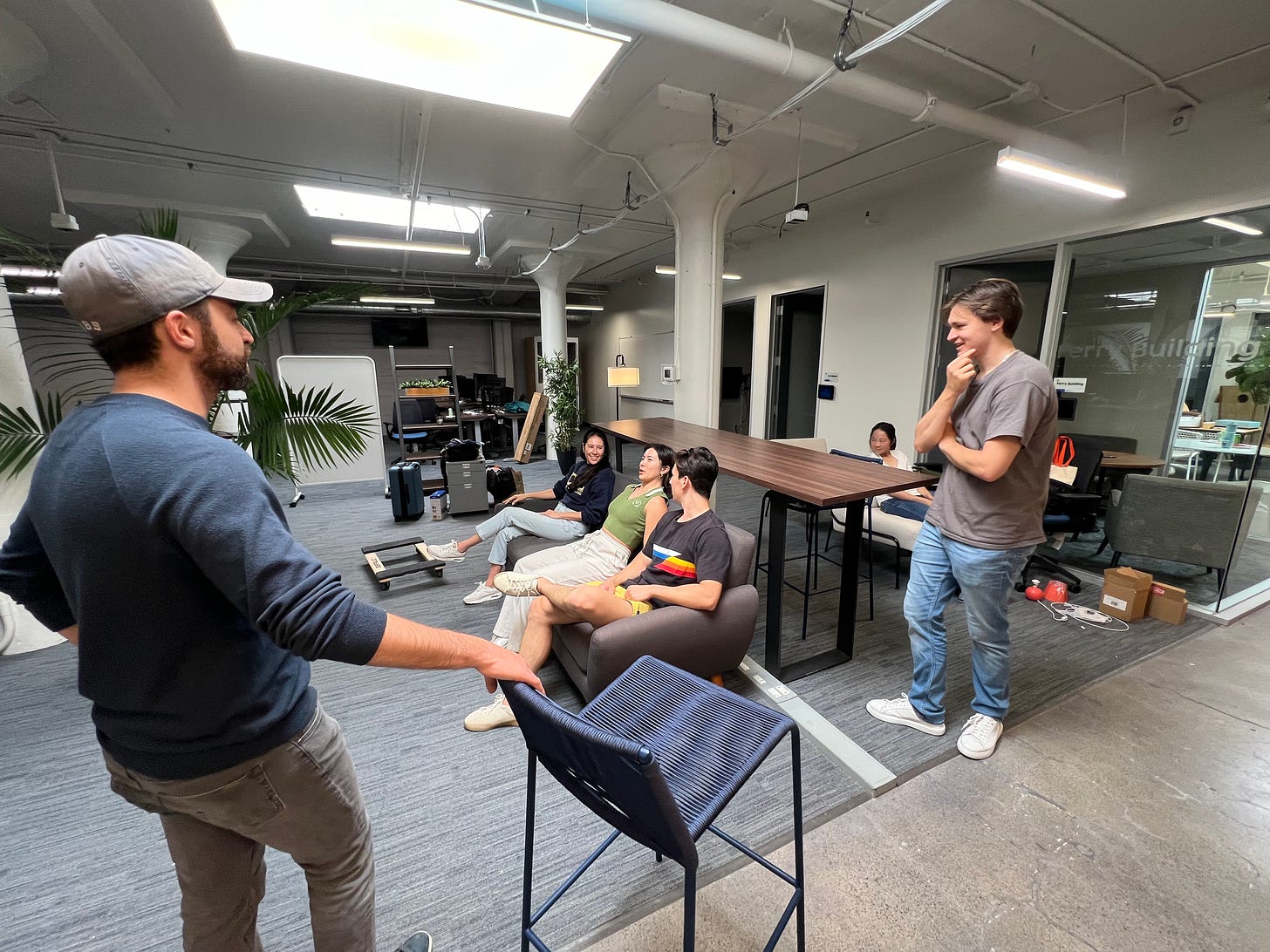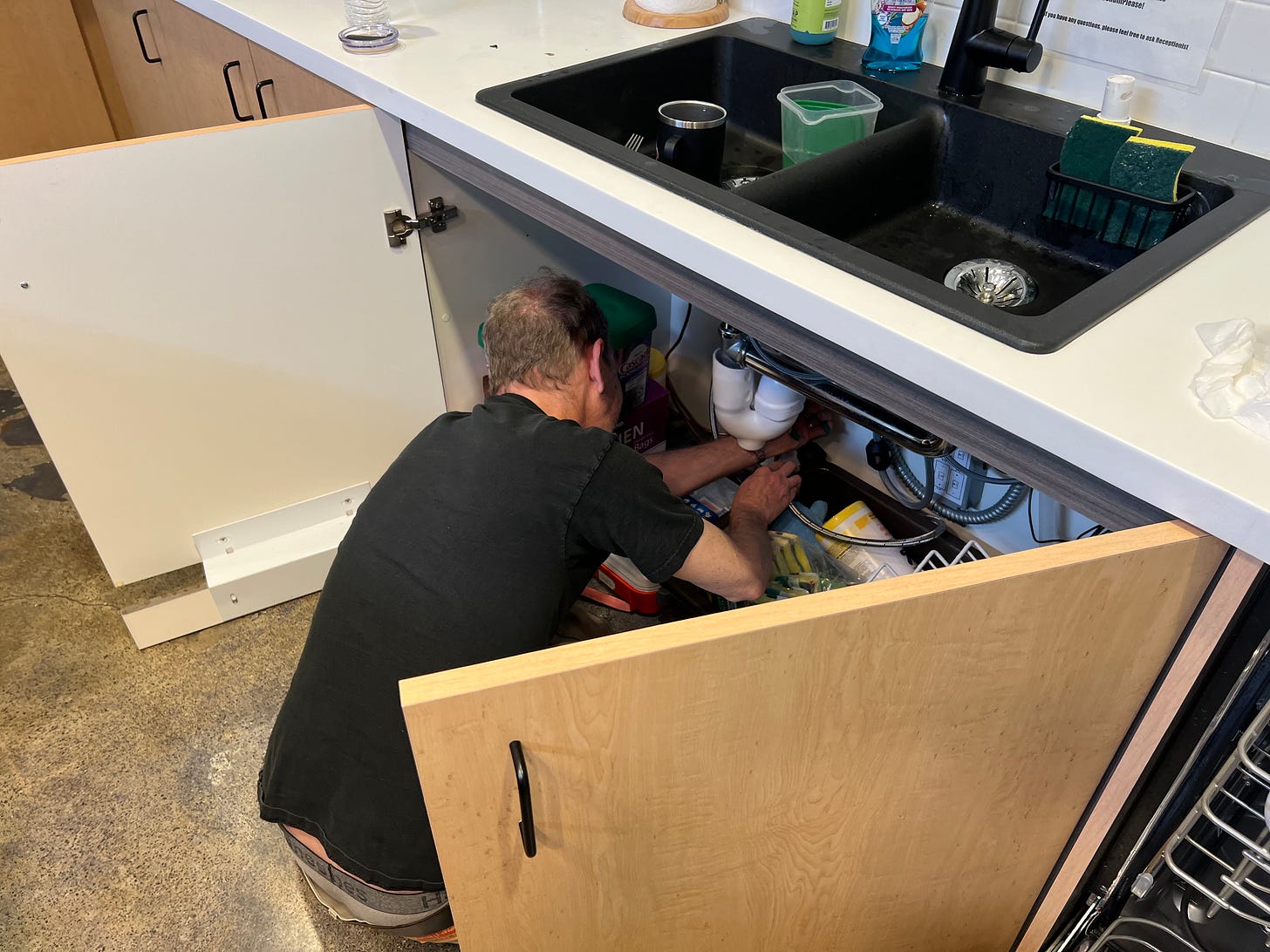So we got an office.
14 months into building a company that sells office space, we finally got one for ourselves.
I was a bit nervous about it. For the last 2 years, I’ve been preaching the chorus of how impactful a company’s decisions around office space can be — on the organization, and the lives of the individuals a part of it.
Deciding where your people work — or, avoiding the decision to do so — affects so, SO much. It affects how they show up at work, how they connect with others, how they create. It affects how much time they spend with their families. It affects what stores they shop at, where and how they take care of their physical wellbeing. It affects their own identity and how their job fits into it. The considerations are vast and the tradeoffs not easy.
And yet, I will admit, I was writing entirely from my pre-COVID office experience. I haven’t actually worked in a real office for a real company since 2020. So there was something a bit phony-feeling about me sharing all this. Had I just gone off on some theatrical diatribe on a topic that doesn’t actually matter all that much?
We’re a couple months into our new space at 2nd and Townsend in San Francisco (please come by if you’re in the area), and the experience so far has been both validating and insightful.

A year and a half ago, I wrote a post titled “Why ‘where’ matters” (check out my celestial cartoon image, proudly created by yours truly pre-ChatGPT).
In it, I argued that as instinctual beings, the environment we place ourselves in has a greater affect on how we show up than we often care to admit:
Indeed, the environment around us also has an impact on our brain state -- affecting how aware, focused, creative, or controlled we are at any given moment. This isn’t a new discovery — but perhaps one we’ve forgotten a little bit these past few years.
The importance of the environment on our brain and how it shows up cannot be overstated. It's the reason why:
Churches and other prayer sites have for thousands of years been built around grandiose, opulent sanctuaries that are believed to inspire awe and make it easier for people to pray
Restaurants and cafés are generally designed with ambient lighting, intended to make it easier to relax and socialize with others
Office buildings have been known to set thermostats slightly below room temperature as it is believed that people are able to focus better when slightly cold
But, I didn’t actually say what I think the biggest difference is between working in an office and working at home. The COVID shift to work from home was so stark and abrupt that it wasn’t an easy thing to compare. Everything changed all at once. The feeling of working at home is different when everyone is working at home, because no one has any other option.
Now, times have changed. We’ve entered the new normal of work — a hybrid normal, for most people at most companies. And, having settled in our new space, there’s a few things I’ve observed.
The first is that everything feels like it’s moving faster.
We went from a row boat in a lake with all of us rowing slightly off-sync to a high powered sailing boat cruising the bay. There’s a ton more communication and teamwork.
The reason is that, on the internet, communication is limited to either async-messaging - which requires significantly more words-per-output - or scheduled meetings. Slack huddles tried to solve this by bringing the “unscheduled live convo” to the virtual office, but they’re just not used as much, I think for the reason that you can’t know if the person on the other side is preoccupied, and therefore you assume you might be disturbing their flow.
Imagine sailing a boat where, in order to alert your partner to turn the helm or ease the sheets, you have to write a letter to them or wait until your end-of-day sync.
In the office, you can look over at someone at their desk, give a nod, and get the cue. Nonverbal communication is powerful, and without even realizing it, we utilize a whole toolbox of cues that each have different contextually-appropriate meanings.
I will admit that it can often feel less productive in the office, as there seems to be less time for heads-down work. But, the “head-up” work just seems more efficient. In the past month, we’ve made decisions twice as fast as we would have on the internet. We’ve launched a half dozen or more new experiments, driving to action and spending less time “planning.” And those accelerated decisions have probably saved us a lot of time on heads-down work that wouldn’t have mattered.
Balance has been crucial. Having a couple days in, a couple days at home seems to be great solve for this.

The second is that I feel more connected to, and less anxious about, my relationships with my colleagues.
If there’s one thing I care about most as a leader, it’s how my team is doing. Are we all here, together? Are we moving in sync?
When you’re working on a team, there are inevitably going to be tensions that arise. Someone’s job is disturbed by someone else not doing their job right, someone oversteps their role and another feels threatened. It happens every single day.
On Zoom, it’s hard to really know how people are doing. It’s much easier to hide frustrations and annoyance. “It’s no big deal,” we tell ourselves.
But it is a big deal. Because we’re thinking about it, and it’s now preventing us from doing our jobs in the best way possible.
I felt on Zoom I was always looking for signs of how my teammates were doing, trying to infer where not stated explicitly.
The lack of data on wellbeing led me to tell stories that weren’t grounded in facts. And those stories made me anxious, fearful of a worst-possible outcome (“will Jay ever be able to work on a project with Julia again??”).
Those stories I told myself, and that anxiety they triggered, made it harder for me to connect. I remember seeing work colleagues for the first time after three months on Zoom. I looked at them and felt confused. Are you the same person I knew before? Is this you, or some version of you I’ve created? I see you everyday on Zoom, but I actually don’t really know how you’re doing.
The confusion created a barrier for my own opening up. The “picnic day” get together felt more like a formal work event for a company I joined last week in a city I’ve never lived in, than it did a hangout with my team. Is this my team?
The hallway chatter and nonverbal cues have changed how I see my teammates.
The stories in my mind are cut. Hiding frustration is much harder in person. Conflict is uncomfortable but unavoidable. Issues are addressed. Talk happens. And the more it happens, the more vulnerable we are with each other, the more connected I feel.

Third, schedules and commute are hard. I will admit that.
I’m working more than I was before. The commute adds up, and the reduction in heads down time has added more to my weekend plate.
So far, it feels worth it. Why? I’m excited about what we’re building, I’m young and have no kids or family to take care of.
What if I were a mother of 2 toddlers, working a job for the primary purpose of paying rent?
This is hard.
Do I think the benefits I’ve gleaned in the office carryover? Absolutely. But I also recognize that the costs of coming in might be greater.
I don’t have a simple answer, other than “hybrid.”
Once a month with a team is not enough.
That’s just called “team fun.” If you want to throw money at your employees, give them a bonus.
If you want them to get the benefits of in-person that I’ve described above, once a week, in my view, is a minimum.
More learnings to come.







What about the impact of multitasking in remote work? Curious on your perspective as someone who thinks about co-working and teams everyday
Outstanding. From the heart! Love it.